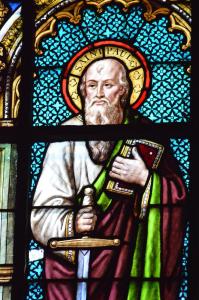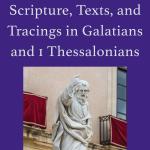Biblical scripture does not tell us about the death of the Apostle Paul. How did he die? In 2 Timothy 4:6–8, Paul is said to have been in prison and claims to have finished his course, fighting the good fight of faith. The last we hear about him he is in prison in Rome in Acts 28 under some sort of house arrest.
Acts leaves Paul’s final days in question. Certain scholars suggest the silence about his end is an implication that author of Acts—traditionally Luke—implies that as Jesus was killed in Luke’s Gospel, so Paul would be killed in Acts.
But this is not what the early church thought.
Early Church Tradition on Paul’s Death
Before his arrest that led him to appeal to Caesar in Rome, Paul had earlier planned to visit Rome. He hoped to be sent to Spain by the Roman Christ-followers; in Spain he wanted to proclaim the gospel (Rom 15:23–28).
At the end of the first century, Clement of Rome claims that Paul reached the “limit of the west” before he died (1 Clement 5:7). This is very likely assumed to be Spain, which was considered as the limits of the western world at that time (Strabo, Geography 2.1.1; 2.4.3; Diodorus Siculus 25.10.1; Philostratus, Life of Apollonius 5.4; Velleius Paterculus 1.2.3).
David Eastman’s study of Paul’s death includes that ancient Christian sources such as the Acts of Peter, the Muratorian Canon, Jerome (Ep. 71.1), John Chrysostom (Hom. Act. 55), Theodoret of Cyrus, and others confirm that Paul made it to Spain. This means that he survived the imprisonment in Rome from Acts 28. (David Eastman, Paul the Martyr, SBL Press, 2011:144-48; idem, “Death” in T&T Clark Handbook to the Historical Paul, 250).
Later sources such as The Martyrdom of the Holy Apostle Paul in Rome (late second century CE) brings out Paul’s death. Paul is said to have raised Patroclus—a servant of Nero—from the dead, who fell out of a window (similar to Eutychus in Acts 20). Patroclus becomes a believer in Jesus the Messiah and king of the world. He tells this to Nero only to see this emperor outraged at this news. Nero has the Christians in the city arrested and beheads Paul.
The Essentials about Paul’s Death

depicted with a sword as reminder of his death. “Apostle Paul Knows” via pixabay.com
Other early Christian traditions tell of similar stories, including The Passion of the Holy Apostles Peter and Paul. Likewise, ancient depictions of Paul emphasize his martyrdom, more so than his role as an apostolic missionary (see further Eastman, Paul the Martyr).
These stories may have different details but they agree on some essential things, according to Eastman:
(1) that Paul died in Rome
(2) Nero had Paul executed
(3) Paul was beheaded
Fitting this description, Eusebius of Caesarea writes in the fourth century in his History of the Church (Hist. eccl. 2.25.4–5) about Paul: “Examine your records. There you will find that Nero was the first that persecuted this doctrine, particularly then when after subduing all the east, he exercised his cruelty against all at Rome. We glory in having such a man the leader in our punishment. For whoever knows him can understand that nothing was condemned by Nero unless it was something of great excellence. Thus publicly announcing himself as the first among God’s chief enemies, he was led on to the slaughter of the apostles. It is, therefore, recorded that Paul was beheaded in Rome itself, and that Peter likewise was crucified under Nero.”
(Eusebius of Caesaria, Nicene and Post-Nicene Fathers, second series, vol. 1, ed. Philip Schaff and Henry Wace, trans. Arthur Cushman McGiffert, 1890: 129).














